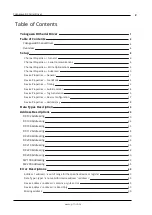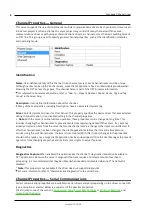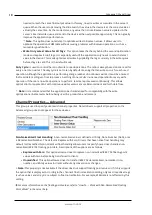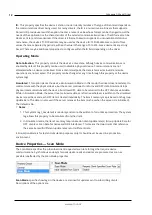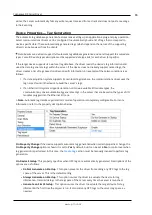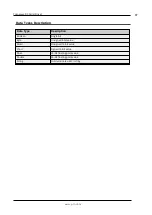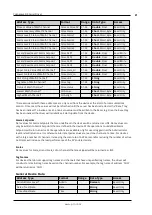
Yokogawa DX Serial Driver
l
None
: This option does not toggle or assert control lines.
l
DTR
: This option asserts the DTR line when the communications port is opened and remains on.
l
RTS
: This option specifies that the RTS line is high if bytes are available for transmission. After all
buffered bytes have been sent, the RTS line is low. This is normally used with RS232/RS485 converter
hardware.
l
RTS, DTR
: This option is a combination of DTR and RTS.
l
RTS Always
: This option asserts the RTS line when the communication port is opened and remains
on.
l
RTS Manual
: This option asserts the RTS line based on the timing properties entered for RTS Line
Control. It is only available when the driver supports manual RTS line control (or when the properties
are shared and at least one of the channels belongs to a driver that provides this support).
RTS Manual adds an
RTS Line Control
property with options as follows:
l
Raise
: This property specifies the amount of time that the RTS line is raised prior to data
transmission. The valid range is 0 to 9999 milliseconds. The default is 10 milliseconds.
l
Drop
: This property specifies the amount of time that the RTS line remains high after data
transmission. The valid range is 0 to 9999 milliseconds. The default is 10 milliseconds.
l
Poll Delay
: This property specifies the amount of time that polling for communications is
delayed. The valid range is 0 to 9999. The default is 10 milliseconds.
Tip
: When using two-wire RS-485, "echoes" may occur on the communication lines. Since this
communication does not support echo suppression, it is recommended that echoes be disabled or a RS-485
converter be used.
Operational Behavior
l
Report Comm. Errors
: Enable or disable reporting of low-level communications errors. When
enabled, low-level errors are posted to the Event Log as they occur. When disabled, these same
errors are not posted even though normal request failures are. The default is Enable.
l
Close Idle Connection
: Choose to close the connection when there are no longer any tags being
referenced by a client on the channel. The default is Enable.
l
Idle Time to Close
: Specify the amount of time that the server waits once all tags have been
removed before closing the COM port. The default is 15 seconds.
Ethernet Settings
Note
: Not all serial drivers support Ethernet Encapsulation. If this group does not appear, the functionality
is not supported.
Ethernet Encapsulation provides communication with serial devices connected to terminal servers on the
Ethernet network. A terminal server is essentially a virtual serial port that converts TCP/IP messages on the
Ethernet network to serial data. Once the message has been converted, users can connect standard devices
that support serial communications to the terminal server. The terminal server's serial port must be
properly configured to match the requirements of the serial device to which it is attached.
For more
information, refer to "How To... Use Ethernet Encapsulation" in the server help.
l
Network Adapter
: Indicate a network adapter to bind for Ethernet devices in this channel. Choose a
network adapter to bind to or allow the OS to select the default.
Specific drivers may display additional Ethernet Encapsulation properties. For more information, refer
to Channel Properties — Ethernet Encapsulation.
www. ptc.com
8


